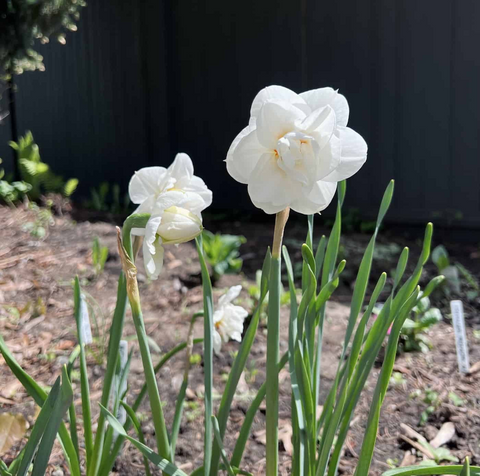Daisies are beautiful flowers that gardeners love to plant in their own gardens. Their delicate white petals compared with their bright yellow centers are what make these flowers so attractive. They are extremely easy to grow, but it is simple to keep these flowers looking perfect all season long.The following content also has some reference value for raised garden beds.
Deadheading your daisies will make your flowers multiply and look healthier than before. However, not everyone will deadhead their daisies, but we know that it makes a huge difference.
In this article, we will go into further detail into how to deadhead daisies and the benefits you will receive from doing this simple task.
What Is A Daisy?
A daisy is typically known as a small and wild flower that has a yellow center surrounded by white petals. Some species of daisies may be wild, while others are commonly grown by gardeners.
Wild daisies are commonly very small and appear in large quantities in grassy areas. Children love to pick wild daisies and make daisy chains. Not only do they look beautiful and delicate. Yet they also have a pleasant aroma, but these plants are mainly grown for their beauty rather than their smell.
There are several species of daisies that you may come across. Most gardens will feature a type of daisy in their garden as they are easy to grow and pleasing to look at.
The name daisy refers to a large variety of plants in the Asteraceae family. This group of plants are known for their disk shaped and flat blooms. Their petals will create rays falling outwards away from the center.
Some varieties of daisies that you may have heard of include: Oxeye Daisy; Marguerite Daisy; Painted Daisy; and Shasta Daisy.
These flowers will often bloom during early summer and last until the first frost. Each type or variety of daisies is different from the other. Therefore, it is easy to find a type of daisy that meets your needs.
Also, their growing requirements might be slightly different from one another.
To keep your daisies growing well, there are a couple of things you can do, one of them being to deadhead your daisies.
What Is Deadheading?
 Deadheading is a very simple process. All you have to do is remove any fading or decaying blooms. This will encourage the plant to keep growing and regrow any blooms that you have removed.
Deadheading is a very simple process. All you have to do is remove any fading or decaying blooms. This will encourage the plant to keep growing and regrow any blooms that you have removed.
Therefore, the plant won’t be wasting any energy on any blooms that are dying. It can focus its energy on new blooms that will make your garden look attractive.
This is basically another form of pruning that will help you to keep your flowers around for much longer.
You don’t have to be deadheading all season long, only towards the end of the summer, you may want to start to think about deadheading. This is when you start to notice dead leaves and petals.
Overall, deadheading is an easy task that even children can do. It is a quick and easy task, but sometimes it does get forgotten.
If you manage to stay on top of deadheading your daisies, you will be able to seek the reward and get to look at your beautiful daisies for much longer.
How To Deadhead Your Daisies
Once you start to notice blooms that are sagging or fading, then you know it is time to start deadheading. It is really easy to deadhead your daisy flowers, and won’t take you long to master this process.
- Step 1: To begin with, you need to identify blooms that are beginning to die, after blooming for so long.
- Step 2: Using a sharp pair of scissors or shears, you want to cut off the dead flower heads. The stalks will be thankful that the extra dead weight has been lifted.
- Step 3: Once you have cut away all the dead blooms, you can discard them. Now you can wait for the new blooms to appear. Your garden will look much more attractive for a lot longer.
Cutting For An Indoor Arrangement

You don’t just have to grow your daisies for outdoor viewing. Thus, you can grow your daisies for an indoor reason like an arrangement or bouquet.
As a result, cutting fresh daisies for either a loved one or yourself also tells the daisy plant to produce more blooms. This could be considered another deadheading method, but this time you cut the flowers from the stem when they are healthy.
- Step 1: For an indoor arrangement or bouquet, you want to select blooms that are either still in buds or just beginning to open up. You want to cut the ends of the stem at a 45-degree angle.
- Step 2: After you have cut your blooms, you will want to remove the leaves. If the cut flowers are to be put in a vase, then all the leaves that will be submerged in water must be removed. If the leaves aren’t removed, then these leaves are likely to rot. Therefore, it is best to remove as many leaves as possible.
- Step 3: Add your cut flowers to the vase and fill them with plenty of water.
- Step 4: It is likely that you will only cut a handful of the flowers at a time for an indoor arrangement. However, you still need to keep an eye on the plant and deadhead any blooms that need deadheading. This way, you will continue to have a sufficient amount of blooms to choose from when you are ready for your next arrangement.










